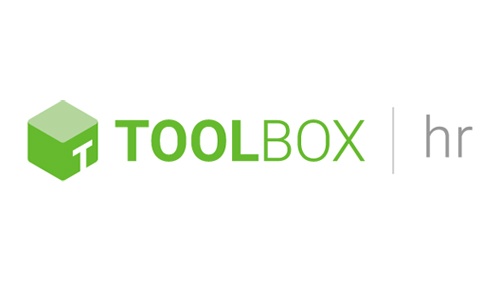
There is no shortage of priorities to juggle when adjusting to the “new normal.” The pandemic continues to send shockwaves through the world of work, and everything, from desk placement to retirement options, is being reconsidered. Managing the complications of open enrollment during COVID-19 is priority No. 1 for many of the HR managers I’ve spoken with over the past few months.
No one knows how long social distancing guidelines will be in effect, but for a fiscal year with a Jan. 1 start date, let’s assume that almost everything involved in the enrollment process will change.
Here are four ways to help you manage the process:
1. Maximize accessibility.
Let’s face it: For most of us, in-person open enrollment meetings are a thing of the past. But transitioning to a virtual-first format requires tech savvy and access. Before choosing a strategy, think of your workforce’s channel of choice, or preferred digital medium.
For example, long distance truckers are smartphone-savvy. They use apps to track their routes, stay in touch with leadership and contact their families. These are the devices best to reach them.
Consider most American households have access to the Internet, but only 62% have a personal printer that was once necessary for signing and returning plan documents.1 Luckily, for many employers, paper enrollment has been replaced by easy-to-use apps. For those who do require paper, smartphone scanning apps have replaced at-home scanners or fax machines.
For organizations with a less tech-savvy workforce, enrollment by phone is also available with some vendors and benefit brokers. Be sure to share concerns about any technology knowledge gaps with your benefits consultant.
Providing different methods of enrollment helps meet employees where they are most comfortable.
2. Make experts available to help employees navigate their benefits.
It’s not surprising that employees are paying more attention to their health insurance benefits than ever before. Younger employees or those with positive coronavirus diagnoses may be using their benefits for the first time, while families with dependents may wish to add more coverage during the upcoming open enrollment. Many furloughed employees who are still receiving health insurance benefits could be navigating this situation for the first time, and are likely unsure how a furlough impacts benefits next year, if at all.
In all of these situations, provide experts to guide employees to make the best decision for their circumstances. If insurance rates are changing, conversations about options are especially important.
This help can be delivered via broker-provided employee advocacy professionals as well as insurance experts who deliver presentations at open enrollment meetings. Pre- and post-enrollment employee education and communications campaigns with reminders and instructions will go a long way toward easing issues. Some vendors are even offering online learning courses and video series. Your broker should either provide or coordinate these services.
3. Know when to stay the course and when to detour.
It’s understandable to want to limit change and disruption during the upcoming open enrollment season. Employees’ minds are elsewhere—and for good reason. They are concerned about the health and wellbeing of their families—some are making less money than they did a year ago and others are furloughed. Depending on the furlough policy, workers may still be covered by the corporate health plan. Employers are tasked with determining what’s right for right now and how that strategy will fit into the future.
With these factors in mind, some employers will elect to renew their benefits as is. But, before making that decision, check to see if keeping the status quo contradicts your long-term plans.
For example, let’s say you are on a three-year strategy to transition the insurance program’s funding arrangement or contribution strategy. This might seem daunting in the current environment, but staying the course and keeping much-needed HR resources focused on the task will pay off.
Alternatively, some employers are launching broker requests for proposals (RFPs) during the pandemic (my firm has responded to many since the crisis began).
COVID-19 has thrown a wrench into just about every aspect of operating a business. Organizations are looking for ways to mitigate the disruption caused by the pandemic, as well as creative, cost-effective ideas geared to address how work life has changed.
If your corporate bylaws mandate the release of an RFP, don’t panic. Brokers often provide RFP templates with standard questions to make the process easier and HR can customize the questions to fit their circumstances.
4. Keep in touch with your employee benefits team.
Human Resources departments have been operating in battle conditions. As the coronavirus spread through the country, they’ve had to transition employees to a safe work-from-home setting, then navigate furloughs and devise and communicate possible return-to-work options. They’ve also had to nail down who and what conditions are covered by their current employee benefits plan.
Hopefully, your employee benefits consultant has been with you every step of the way, helping to define what is covered and offering guidance to communicate those details effectively. With that, your relationship with your benefits consultant has probably changed.
COVID-19 “Distance Learning”: SHARE INFO WITH STAFF
Suddenly, forward-looking strategy meetings in a conference room over lunch have turned into tactical check-ins via video conference. Remember to slow down and allow yourself time to think strategically during open enrollment planning meetings.
Months ago when the crisis began, your consultant should have stepped in as a trusted benefits advisor to assist with communicating current benefits plans and COVID-19 related updates to the workforce. Likewise, open enrollment this time around will be more complicated, requiring even more input, guidance and direct support from the broker.
Once you’ve made decisions, it’s important to stay the course. Make sure you’ve got enough runway to complete your preparation in time for open enrollment season, and keep those check-in calls with your team coming.
No matter how different your open enrollment looks this year, the best way to ensure a smooth transition is with regular and clear communication. As I mentioned above, education and communication go a long way during times of stress, and giving your employees the tools they need to make good decisions will prevent headaches down the line. Most of all, providing compassionate support exactly when they need it will bring much-needed peace of mind during this tumultuous time.
1Deloitte, “Working and studying at home means printing at home too!”





